The beauty of bougainvillea can hardly be overstated; its vibrant hues offer stunning color to sun-loving landscapes. This vigorous grower isn't fussy and is easy to grow as long as it gets full sun. Those who live in the warmer zones of 9 and above can enjoy this tropical beauty out in the garden all year long. For those of you who live in cooler climates, however, don't despair — you can grow bougainvillea outdoors in containers and bring it inside when temperatures dip below freezing. No matter where you live, you can enjoy the beauty of bougainvillea.
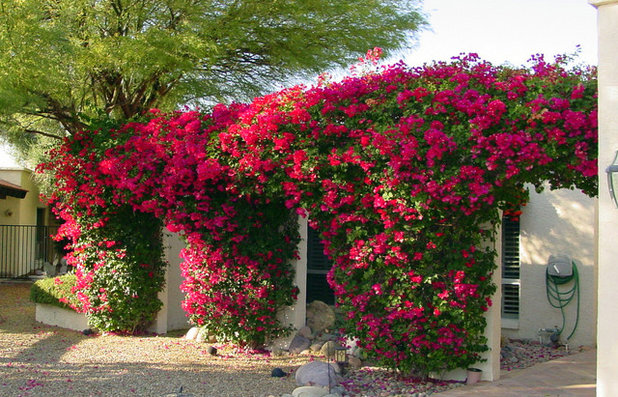
Noelle Johnson Landscape Consulting
Botanical name: Bougainvillea spp
Common name: Bougainvillea
Where it will grow: Hardy to 30 degrees Fahrenheit (USDA zones 9 to 11; find your zone). Can be grown in a container and taken indoors during winter in zones 8 and below.
Water requirement: Low to medium
Light requirement: Full sun
Mature size: 15 to 30 feet tall and 10 to 20 feet wide
Benefits and tolerances: Drought tolerant once established; water deeply and then allow the soil to dry out before watering again.
Seasonal interest: Deep magenta flowers appear against lush, green foliage spring through fall.
When to plant: Spring, summer or fall
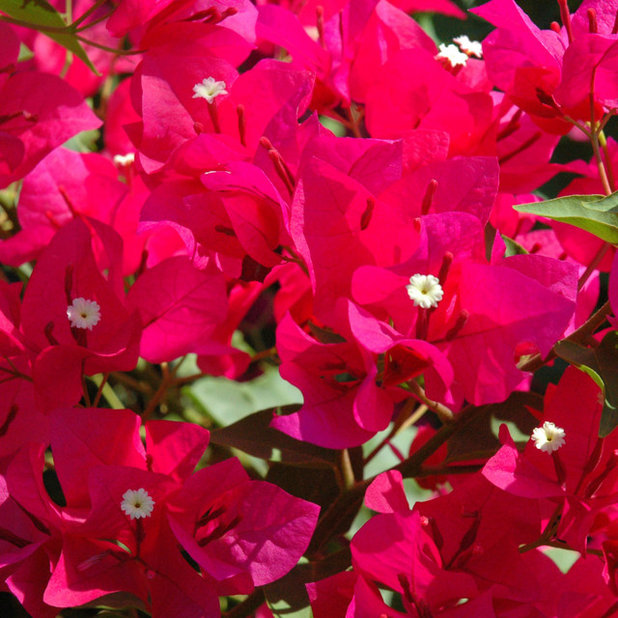
Noelle Johnson Landscape Consulting
Distinguishing traits. The rich hues of bougainvillea are the reason that this tropical, vining shrub takes center stage in many tropical and semitropical landscapes. Surprisingly, the vibrant colors do not come from the flowers, but from the bracts that surround the rather unremarkable small, cream-colored flowers.
Sharp thorns are concealed underneath lush, green foliage.
Shown: 'Barbara Karst' bougainvillea with tiny cream-colored flowers surrounded by colorful bracts
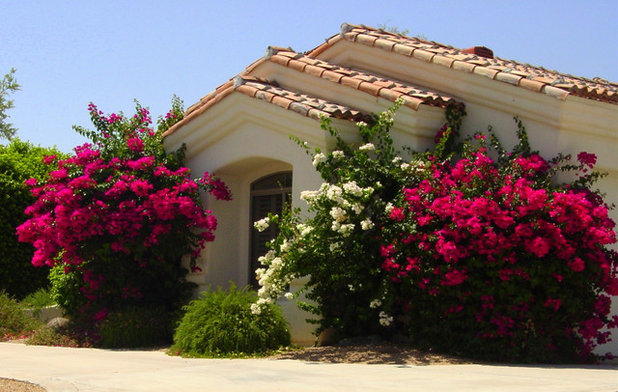
Noelle Johnson Landscape Consulting
Bougainvillea thrives in areas that receive hot, reflected sun. If you grow it in the shade, it will produce attractive foliage but few flowers. In zones 9 and above, you can grow bougainvillea outdoors all year. In zones 8 and below, you can grow it outdoors in containers during summer and bring it inside when temperatures dip below freezing.
Bougainvillea should be kept some distance away from pools, because its bracts create a fair amount of plant litter.
Shown: Magenta and white bougainvillea varieties
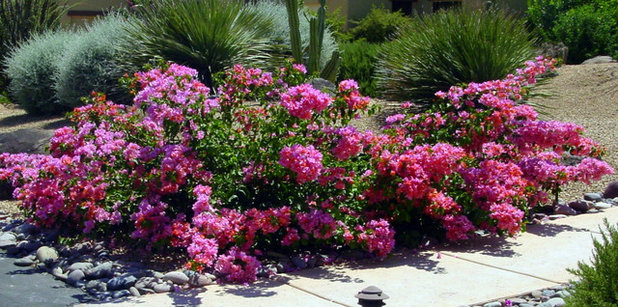
Noelle Johnson Landscape Consulting
The colors of bougainvillea vary depending on the variety and include burgundy, magenta, orange, pink, purple and white. Bougainvillea with variegated foliage is also available.
- 'Barbara Karst' has brilliant magenta coloring.
- 'California Gold' has a unique gold color.
- 'Imperial Delight' has white bracts edged in pink.
- 'Orange King' has burgundy-orange bracts.
- 'Raspberry Ice' has variegated foliage with dark pink bracts.
- 'San Diego Red' has a beautiful dark red color.
- 'Singapore White' has a smaller growth habit and produces white bracts.
- 'Torch Glow' has an unusual upright growth habit and magenta bracts.
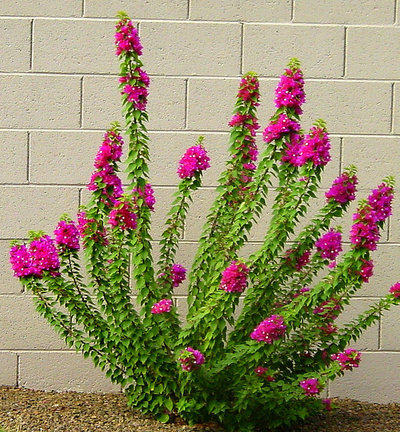
Noelle Johnson Landscape Consulting
In zones 9 to 11, the heaviest flowering of bougainvillea occurs in spring and early fall when the length of days and nights are roughly equal, although it does continue blooming in the summer.
Shown: 'Torch Glow' bougainvillea
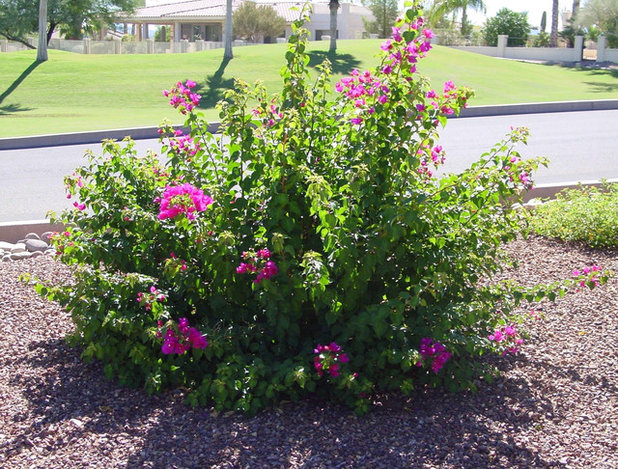
Noelle Johnson Landscape Consulting
How to use it. Because bougainvillea is such a showy plant, it looks great planted by itself. It is extremely versatile and can be used to cover a bare wall when trained up on a trellis. You can also create a colorful entry by training bougainvillea up over an archway.
Shown: Bougainvillea grown as a loose shrub
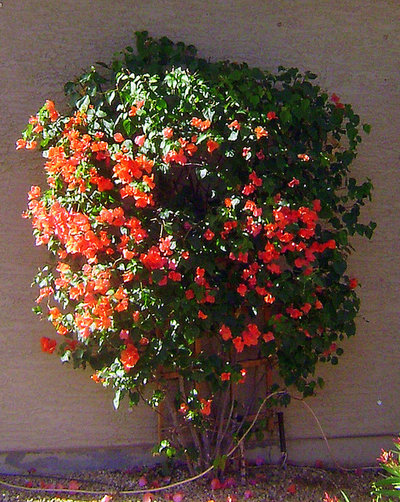
Noelle Johnson Landscape Consulting
Bougainvillea makes a great privacy hedge and can also be trained up into a small tree. Surprisingly, this large, vining shrub does very well when grown in containers.
Shown: Orange bougainvillea trained up on a trellis
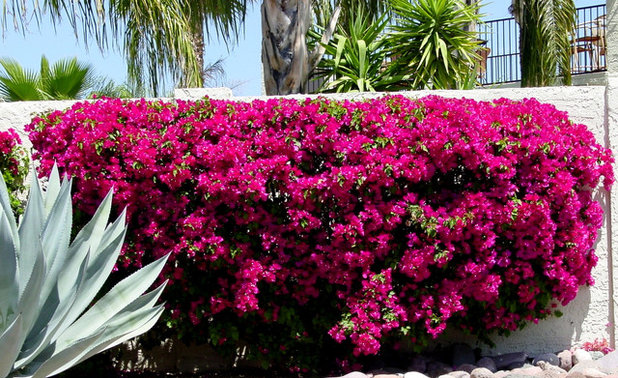
Noelle Johnson Landscape Consulting
Planting notes. Plant it in full sun and well-drained soil. Water deeply and then allow the soil to dry out before watering again. Overwatering leads to lush green foliage but few flowers.
Add a complete slow-release fertilizer to your bougainvillea in spring. Be careful not to overfertilize, which can cause a reduction in flowering. Prune frost-damaged growth once the threat of frost has passed in spring. Bougainvillea can be formally pruned into a hedge, but flowering will be reduced.
Shown: Bougainvillea grown as a hedge





